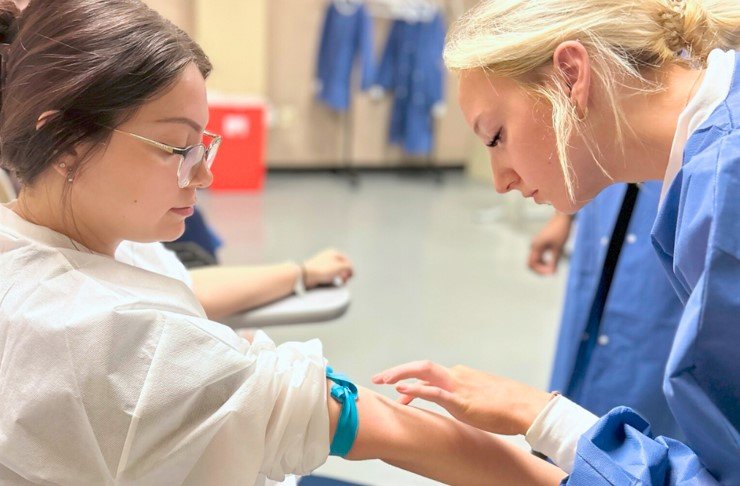Challenges Faced by Hospitals in Implementing and Maintaining Portable Diagnostic Tools
Summary
- Hospitals face challenges in implementing and maintaining a supply of portable diagnostic tools for phlebotomy procedures.
- The cost of acquiring and maintaining portable diagnostic tools is a major challenge for hospitals.
- Ensuring proper training and standardization of practices among staff members is crucial for successful implementation and maintenance of portable diagnostic tools.
Introduction
Hospitals in the United States face various challenges when it comes to implementing and maintaining a supply of portable diagnostic tools for phlebotomy procedures. These tools are essential for diagnosing and treating patients, yet hospitals often struggle with issues related to cost, training, and standardization. In this article, we will explore the challenges hospitals face in this regard and discuss possible solutions to address them.
Challenges Hospitals Face
Cost
One of the major challenges hospitals face in implementing and maintaining a supply of portable diagnostic tools is the cost involved. These tools can be expensive to acquire, and hospitals must also allocate budget for their maintenance and upgrades. Additionally, the cost of consumables such as test strips and lancets can add up over time, further straining the hospital's resources.
Training
Another challenge hospitals encounter is ensuring that staff members are adequately trained to use portable diagnostic tools effectively. Phlebotomy procedures require precision and skill, and improper use of these tools can lead to inaccurate Test Results or patient discomfort. Hospitals must invest in training programs to educate their staff on the proper use of these tools and ensure that they are following best practices.
Standardization
Standardization of practices is crucial for the successful implementation and maintenance of portable diagnostic tools in hospitals. Each staff member must follow the same procedures and protocols when using these tools to ensure consistency and accuracy in Test Results. Lack of standardization can lead to errors, misdiagnoses, and ultimately compromise patient care.
Solutions to Address These Challenges
Cost-effective Options
To address the cost challenge, hospitals can explore cost-effective options for acquiring portable diagnostic tools. This may include negotiating bulk discounts with suppliers, leasing equipment instead of purchasing it outright, or exploring government grants and funding opportunities. Hospitals can also consider partnering with other facilities to share resources and reduce costs.
Training Programs
Hospitals should invest in comprehensive training programs for their staff to ensure they are well-equipped to use portable diagnostic tools effectively. Training should cover not only the technical aspects of using the tools but also emphasize the importance of following proper procedures and protocols. Regular refresher courses and hands-on training sessions can help reinforce best practices among staff members.
Standard Operating Procedures
Developing and implementing standard operating procedures (SOPs) is essential for ensuring standardization of practices among staff members. SOPs should outline step-by-step instructions for using portable diagnostic tools, as well as guidelines for maintenance, calibration, and troubleshooting. Regular audits and performance reviews can help ensure that staff members are following SOPs correctly.
Conclusion
In conclusion, hospitals in the United States face various challenges in implementing and maintaining a supply of portable diagnostic tools for phlebotomy procedures. By addressing issues related to cost, training, and standardization, hospitals can improve the efficiency and quality of their diagnostic services. Investing in cost-effective options, comprehensive training programs, and standard operating procedures can help hospitals overcome these challenges and ensure better patient outcomes.

Disclaimer: The content provided on this blog is for informational purposes only, reflecting the personal opinions and insights of the author(s) on the topics. The information provided should not be used for diagnosing or treating a health problem or disease, and those seeking personal medical advice should consult with a licensed physician. Always seek the advice of your doctor or other qualified health provider regarding a medical condition. Never disregard professional medical advice or delay in seeking it because of something you have read on this website. If you think you may have a medical emergency, call 911 or go to the nearest emergency room immediately. No physician-patient relationship is created by this web site or its use. No contributors to this web site make any representations, express or implied, with respect to the information provided herein or to its use. While we strive to share accurate and up-to-date information, we cannot guarantee the completeness, reliability, or accuracy of the content. The blog may also include links to external websites and resources for the convenience of our readers. Please note that linking to other sites does not imply endorsement of their content, practices, or services by us. Readers should use their discretion and judgment while exploring any external links and resources mentioned on this blog.
